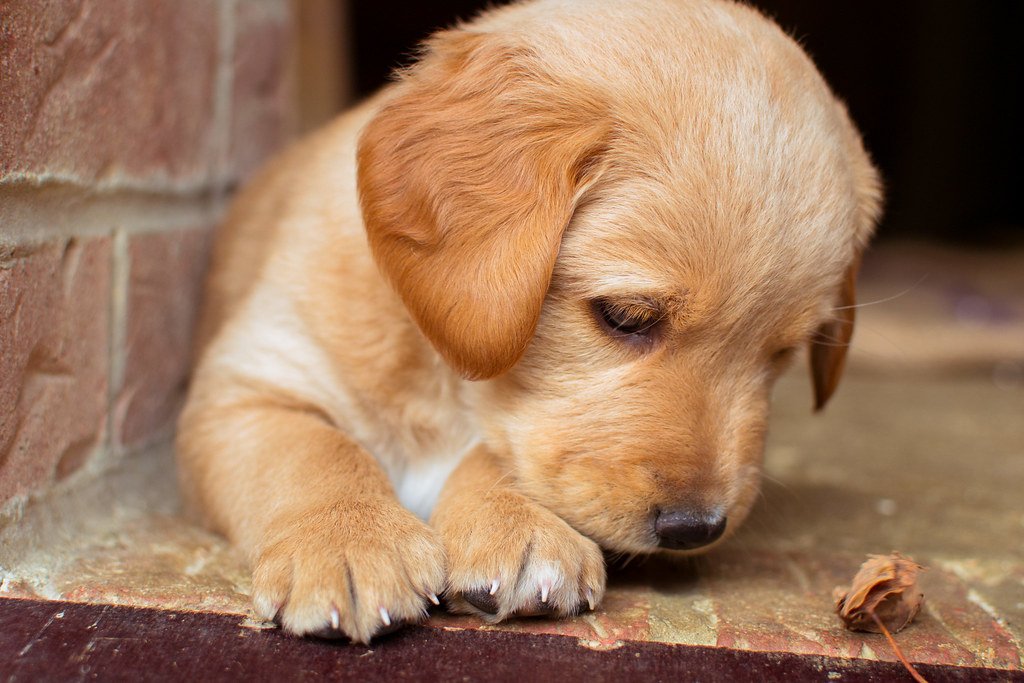Splish, splash! It’s time to dip into a world of suds and bubbles as every furry friend’s favorite foe surfaces: the dreaded bath time. While many puppies approach this aquatic adventure with much trepidation, there are plenty of creative ways to transform the fear of water into an exhilarating and joyful experience. So, if you’ve been wrestling with a water-phobic pup, worry not! In this article, we’ll delve deep into the art of puppy training for fear of water, gently guiding you through the waves of possibilities and helping you make bath time an eagerly anticipated event. Prepare to dive into a world where bath time is not just clean, but an adventure worth wagging tails for.
Table of Contents
- Discovering the Root Causes of Your Puppy’s Fear of Water
- Creating a Safe and Positive Bath Time Environment
- Gradual Desensitization Techniques to Overcome Fear of Water
- Engaging Water Play Activities to Build Confidence
- Reward-Based Training Methods to Transform Bath Time into a Enjoyable Experience
- Q&A
- To Conclude

Discovering the Root Causes of Your Puppy’s Fear of Water
Understanding Your Puppy’s Fear of Water
Many puppies experience a certain level of fear or apprehension when it comes to water. It is crucial to uncover the root causes of this fear to help your furry friend overcome it and develop a healthy relationship with water.
Environmental Factors:
1. Negative experiences: Puppies may develop fear of water due to past unpleasant encounters such as getting startled by a sudden splash or slipping on wet surfaces.
2. Lack of exposure: If your puppy has not been gradually introduced to water in a positive and controlled manner from an early age, it might result in fear or anxiety around water bodies.
Biological Factors:
1. Genetic predisposition: Some breeds have a natural aversion to water. Certain genetic traits can contribute to their fearfulness towards water-related activities.
2. Sensitivity to sensory stimuli: Puppies with heightened sensitivity to sights, sounds, or touch may find the unfamiliar sensation of water overwhelming and triggering fear.
By identifying these root causes, you can tailor a training plan that gradually desensitizes your puppy to water, replacing fear with confidence and curiosity. Remember to remain patient, provide positive reinforcement, and seek professional guidance if necessary.

Creating a Safe and Positive Bath Time Environment
Ensuring a safe and positive bath time experience is essential for both parents and children. By implementing a few simple measures, bath time can become a joyful and stress-free activity. Here are some tips to create a safe and positive bath time environment:
- Keep the bathroom clean and organized: Clear any clutter or unnecessary items that can pose a tripping hazard.
- Use non-slip mats or adhesive strips: Place these in the bathtub to prevent any accidental slips and falls.
- Monitor water temperature: Always check the water temperature before immersing your child. Aim for a warm bath, around 37 degrees Celsius.
- Stay within arm’s reach: Never leave your child unattended in the bathtub, even for a few seconds. Be sure to stay close by to ensure their safety.
- Keep bath toys clean and sanitized: Regularly clean and disinfect bath toys to prevent the growth of mold or bacteria.
- Create a fun and engaging environment: Use colorful bath toys, bubbles, and soothing music to make bath time a pleasant experience for your little one.
By following these simple steps, you can transform bath time into a safe and positive ritual that both you and your child look forward to each day.

Gradual Desensitization Techniques to Overcome Fear of Water
For individuals with a fear of water, there are effective gradual desensitization techniques that can help them overcome their anxieties and embrace the joyful experience of being in water. These techniques involve gradually exposing oneself to water-related activities in a controlled and supportive environment. Here are some creative ways to conquer your fear:
- Start with visualization: Begin by mentally picturing yourself in a calm and safe water setting. Imagine the soothing sensation of water against your skin and the joy it brings. Visualize yourself overcoming your fears confidently and effortlessly.
- Take small steps: Start by dipping your toes into a small tub or pool of water. Gradually increase the water level as you become more comfortable. Celebrate each small victory along the way, as these steps are essential for building confidence.
- Try flotation devices: Use flotation devices such as life jackets or foam floats to feel more secure in the water. These aids will give you a sense of buoyancy and support, easing any fears of sinking. Slowly reduce your reliance on them as your confidence grows.
- Enroll in swimming lessons: Joining a swimming class with experienced instructors is an excellent way to learn water safety skills and conquer your fear. They will guide you through the learning process, ensuring a safe and supportive environment.
- Practice controlled breathing: Mindful breathing exercises can help regulate your anxiety levels while in the water. Take slow, deep breaths, focusing on the sensation of inhaling and exhaling. This technique will help you maintain a relaxed state of mind.
Remember, overcoming the fear of water is a gradual process. Be patient with yourself, embrace positive affirmations, and never hesitate to seek professional guidance if needed. With perseverance and the right techniques, you will triumph over your fear and discover the joys that water has to offer.
Engaging Water Play Activities to Build Confidence
When it comes to building confidence in young children, water play activities can be incredibly effective and engaging. These activities not only provide a fun and refreshing way to beat the heat but also foster important developmental skills. Here are some exciting water play ideas that are sure to boost your child’s confidence:
1. Sensory Splash: Fill a shallow pool or basin with water and add various objects such as floating toys, sponges, and cups. Let your child explore and experiment by feeling the different textures and splashing around. Encourage them to pour water into different containers or squeeze the sponges to enhance their fine motor skills while building confidence in their ability to create and manipulate their environment.
2. Water Obstacle Course: Set up a mini obstacle course using different water stations, such as a sprinkler, small fountain, or water slide. Show your child how to maneuver through each station, challenging them to complete the course independently. Not only will they gain confidence in their physical abilities, but they’ll also develop problem-solving skills as they navigate the various challenges.
3. Water Art: Provide your child with a large sheet of paper, watercolors, and a spray bottle filled with water. Let them create their own masterpiece by spraying water onto the paper and then applying the watercolors. This activity promotes creativity and allows children to experiment with different techniques, fostering confidence in their artistic abilities.
With these engaging water play activities, your child will not only have a blast but also develop essential skills that will boost their confidence in a fun and interactive way!
Reward-Based Training Methods to Transform Bath Time into a Enjoyable Experience
Turning bath time into an enjoyable experience for your furry friend can sometimes feel like an impossible task. However, with the right reward-based training methods, you can transform this seemingly dreaded chore into a fun and relaxing ritual for both you and your pet.
1. Treats as motivation: Incorporate positive reinforcement by rewarding your pet with treats during and after bath time. By associating the bath with delicious treats, your pet will gradually start to view bathing as a positive experience. This technique works wonders, especially for pets who are initially resistant to water.
2. Praise and encouragement: Never underestimate the power of words to motivate your pet. Use words of praise and encouragement throughout the bath, accentuating your pet’s good behavior. This positive affirmation will show them that they are doing a great job, which in turn will make them more comfortable and cooperative.
3. Interactive toys for distraction: Keep your pet’s mind busy during bath time by providing interactive toys, such as floating rubber ducks or puzzle toys that dispense treats. These toys serve as a positive distraction and will help redirect their attention away from any fears or anxieties they may have about the water.
Remember, patience is key, and each pet will respond differently to these reward-based training methods. By using treats, praise, encouragement, and interactive toys, you can gradually transform bath time into an enjoyable bonding experience, creating a clean and happy pet.
Q&A
Why is my puppy afraid of water?
Puppies can develop fear of water due to negative experiences or lack of exposure during their critical socialization period. It is important to address this fear early on to prevent it from becoming a long-lasting phobia.
How can I help my puppy overcome fear of water?
Start by introducing your puppy to water gradually. Begin with shallow water, use treats and positive reinforcement, and make sure bath time is a calm and comfortable experience. Slowly increase the water depth as your puppy becomes more comfortable.
What can I do to make bath time fun for my puppy?
Adding toys or treats to the bath can make it a positive and enjoyable experience. Use a gentle and warm water temperature, speak soothingly to your puppy, and make sure to reward them with lots of praise and treats for their brave behavior.
Are there any training exercises that can help with the fear of water?
Yes, there are various training exercises that can help desensitize your puppy to water. Gradually introduce them to different water sources, such as kiddie pools or shallow ponds, using positive reinforcement. Patience and consistency are key when helping your puppy overcome their fear.
Should I force my puppy into the water?
No, forcing your puppy into the water can worsen their fear and cause significant stress. It is crucial to allow your puppy to approach water at their own pace and offer positive experiences to build trust and confidence.
What if my puppy’s fear of water doesn’t improve?
If your puppy’s fear of water persists or worsens despite your efforts, it may be best to seek professional help from a dog trainer or behaviorist. They can provide tailored guidance and techniques to specifically address your puppy’s fear and anxiety.
To Conclude
As we wrap up our exploration into the world of puppy training for fear of water, we hope we’ve shed some light on how to transform bath time into a delightful adventure for your beloved canine companion. Remember, patience and understanding are key when it comes to helping your furry friend overcome their fears and build a positive association with water.
By incorporating playful techniques and enticing rewards, you can gradually acclimate your pup to the awe-inspiring world of bubbles and splashes. From introducing them to stimulating water-themed toys to joining them in their aquatic escapades, make sure bath time becomes an experience they eagerly anticipate. And when those droopy, sad puppy eyes are swapped with a wagging tail and an ear-to-ear grin, you’ll know you’ve successfully navigated the depths of your pup’s fear of water.
Finally, always ensure the safety and comfort of your furry friend during the bathing process. Keep the water temperature pleasant, provide gentle support throughout, and never force the issue if your pup remains hesitant. Remember, building trust and instilling confidence takes time, but with your unwavering dedication and love, your pup will soon be diving headfirst into bath time with pure joy.
As we conclude our journey together, we wish you the best of luck in making bath time a truly enjoyable experience for your four-legged friend. We hope these insights have been enlightening and that your pup will soon be eagerly splashing and frolicking in that once-dreaded bathtub. So, go forth, fearless puppy trainers! Let’s transform bath time from a dreaded chore into an enchanting rendezvous of laughter, bubbles, and warm, foamy memories.
As an affiliate, my content may feature links to products I personally use and recommend. By taking action, like subscribing or making a purchase, you’ll be supporting my work and fueling my taco cravings at the same time. Win-win, right?
Want to read more? Check out our Affiliate Disclosure page.